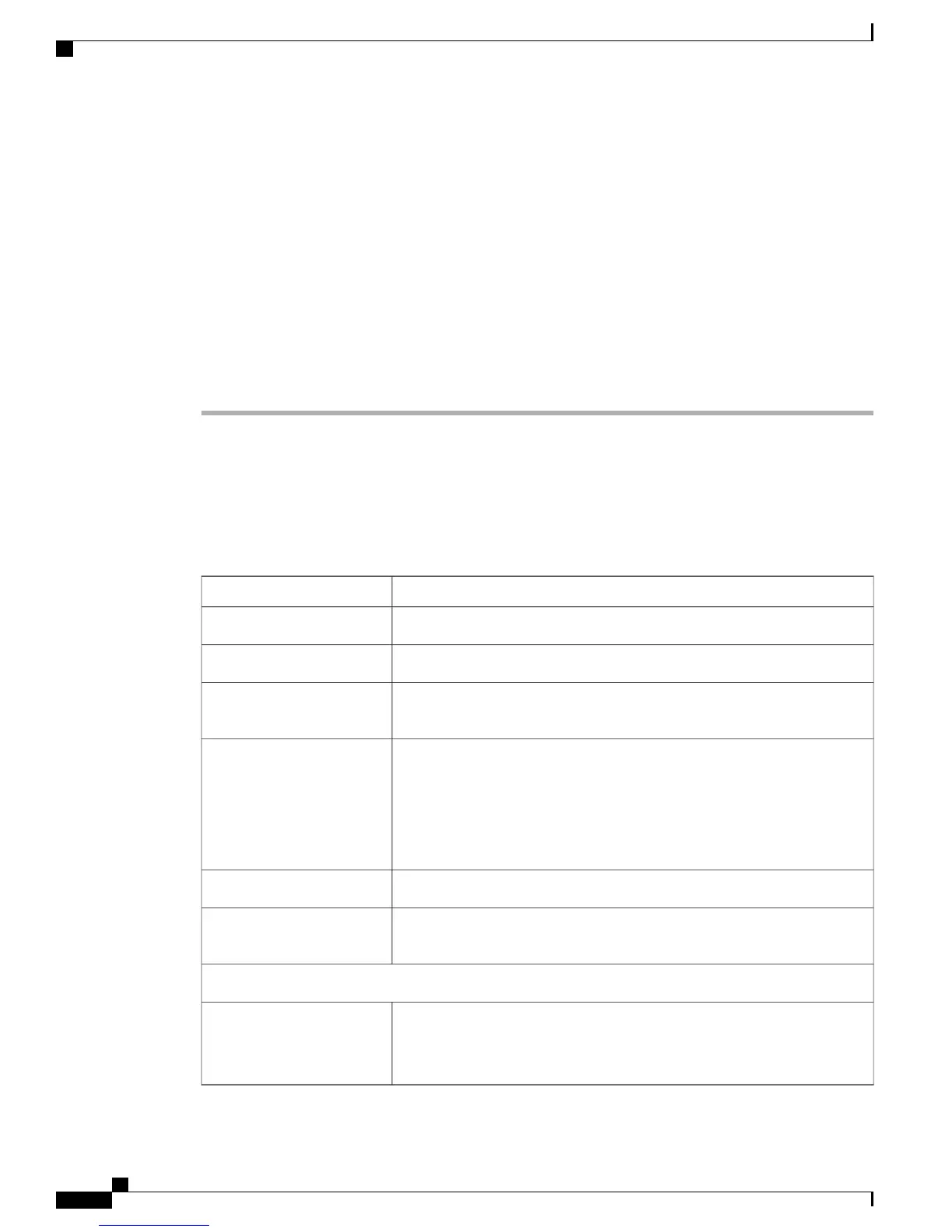• To update an existing application remote server, click the parameter field you want to change and enter
the appropriate settings as described in Remote Server Parameter Settings, on page 190.
Step 4
Click Test Connection to confirm the following:
• Server is reachable
• User ID and password are valid
• Directory path exists on server
Step 5
Click Save to save the configuration or click Reset to reset to the previous saved configuration.
If the save operation fails an error message appears describing the reason for the failure.
You can click Cancel to return to the configuration page or click Save to save the changes anyway.
Remote Server Parameter Settings
The following table describes the available settings in the Remote Server Parameters section of the Call Detail
Offloading window.
Table 32: Remote server parameter settings
DescriptionField
Enter the IP address of the remote server to which you want to send CDRs.IP Address
Enter the username of the remote server.User Name
Choose the protocol, either FTP or SFTP, that you want to use to send the
CDR files to the configured remote servers.
Protocol
Enter the directory path or click Browse to navigate to the remote server to
which you want to send the CDRs. You should end the path that you specify
with a / or \, depending on the operating system that is running on the
application billing server.
Make sure the FTP user has write permission to the
directory.
Note
Directory Path
Enter the password that is used to access the remote server.Password
Click Test Connection if you want to validate the Call Detail Offloading
configuration settings before saving the settings.
Test Connection
System Identification
Displays the unique identification name of the Cisco Business Edition 3000
server.
You can edit System Identifier field only on the Network Settings page.
System Identifier
Administration Guide for Cisco Business Edition 3000, Release 8.6(4)
190 OL-27022-01
Call Details Report Offloading

